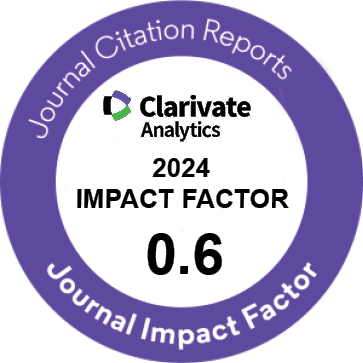| Original Article | |
| The Comparison the Impact of Flare-up GnRH Agonist with Delayed-Start GnRH Antagonist Protocols on the IVF Outcome of Poor Responder Patients: A Randomized Controlled Trial | |
| Shirzad Hosseinishenatal1, Fardin Amidi2, Mohammad Ebrahim Parsanezhad3, Sirous Rostami4, Mojtaba Eslami2, Aligholi Sobhani5 | |
| 1Department of Anatomy, School of Medicine, International Campus, Tehran University of Medical Sciences (IC-TUMS), Tehran, Iran 2Department of Anatomy, School of Medicine, Tehran University of Medical Sciences, Tehran, Iran 3Department of Gynecology and Obstetrics, Division of Reproductive endocrinology and infertility, School of Medicine, Shiraz University of Medical Sciences, Shiraz, Iran 4Shiraz Fertility Center, Shiraz, Iran 5Department of Anatomy, School of Medicine, International Campus, Tehran University of Medical Sciences (IC-TUMS), Tehran, Iran |
|
|
IJWHR 2022; 10: 202-208 DOI: 10.15296/ijwhr.2022.34 Viewed : 2493 times Downloaded : 2126 times. Keywords : GnRH analogues, Flare-up GnRH agonist, Delayed-start GnRH antagonist, Poor responsiveness |
|
| Full Text(PDF) | Related Articles | |
| Abstract | |
Objectives: The current research was established to make a comparison between the delayed-start GnRH antagonist and flare-up GnRH agonist protocols in poor response patients. Methods: The present study is a randomized, prospective, controlled trial that was performed on 150 women who referred to two distinct in vitro fertilization (IVF) centers in Iran. Patients were randomly assigned to two experimental groups, as one group was treated with the delayed-start GnRH antagonist protocol (delayed-start group), while another group was treated with the flare-up protocol (flare-up group). Results: The serum concentrations of estradiol and progesterone, along with the thickness of endometrial tissue and the number of follicles ≥13 mm was significantly increased in the delayed-start group compared with the flare-up group. Also, the number of total oocytes, retrieved mature oocytes, total embryos, fertilized oocytes, as well as the quality of embryos were markedly higher in the delayed-start group when compared with the flare-up group. No statistically significant difference was found in the rates of fertilization, implantation, and pregnancy between the two experimental groups. Conclusions: According to the above evidence, it seems that the effect of delayed-start protocol on ovarian responsiveness was more pronounced during controlled ovarian stimulation in comparison with the flare-up protocol and the delayed start protocol probably lead to better implantation and pregnancy rates in comparison with the flare up agonist protocol cycle in poor responders. |
Cite By, Google Scholar
Google Scholar
PubMed
Online Submission System
 IJWHR ENDNOTE ® Style
IJWHR ENDNOTE ® Style
 Tutorials
Tutorials
 Publication Charge
Women's Reproductive Health Research Center
About Journal
Publication Charge
Women's Reproductive Health Research Center
About Journal
Aras Part Medical International Press Editor-in-Chief
Arash Khaki
Mertihan Kurdoglu Deputy Editor
Zafer Akan























